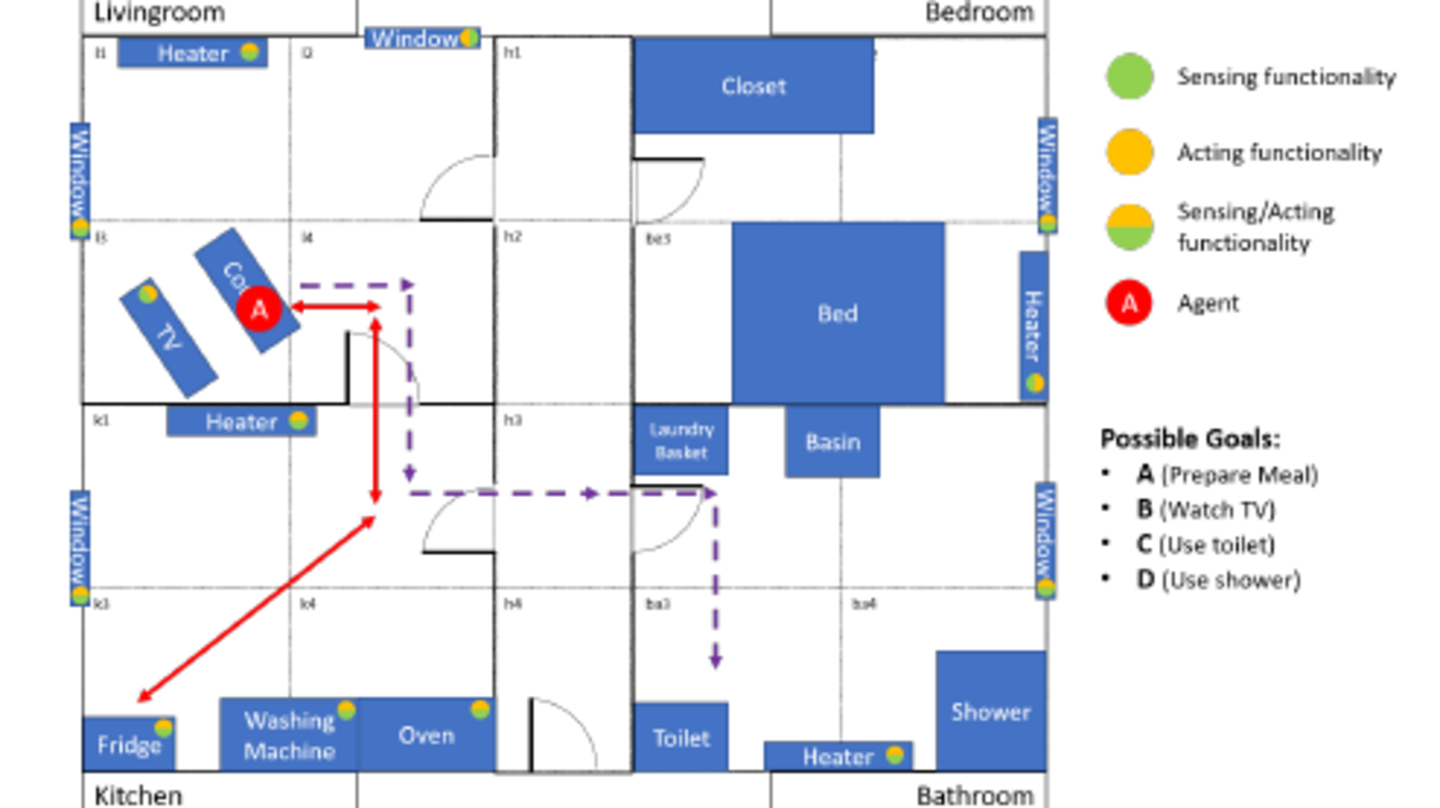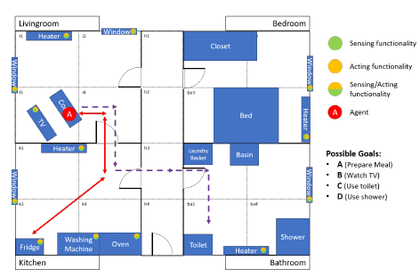Hybrid Goal Recognition in Real World Environments
Research Problem

Probabilistic goal recognition is the problem inferring the posterior probabilities for all goals in a set of goals, given a sequence of observations. In contrast to most existing works, we focus not only on solely symbolic or solely data-driven approaches, but hybrid methods that combine techniques from both paradigms. More precisely, our research aims to answer the following research question: How can symbolic and data-driven methods be combined to hybrid methods that reliably recognize user goals on the basis of observed past and current user activities?
We think that the combination of methods from these two paradigms leads to methods that are superior to the methods from each single paradigm, because they can leverage on the strengths of both. For example, one important reason for the already mentioned problems of symbolic methods is that it is infeasible to manually model all tiny details of a user's environment to an extend that would be necessary to enable these approaches to handle low signals in the data properly. In addition, such approaches have to make strict assumptions about the level of rationality of the observed users and also have to explicitly model how rational behavior looks like. This is most commonly realized via the assignment of costs to each activity and the assumption that it is rational to minimize the overall costs to reach a goal. Nevertheless, in real world scenarios this assumption most likely does not hold, because first, the true costs of each activity might depend on aspects of the environment that are not modeled in the symbolic domain model and second, these costs might also be very individual for every user. A combined approach would tackle these problems, because the data-driven part enables it to learn these environmental details from observed user data. Nevertheless, one prominent problem of data-driven approaches, which is especially relevant in the context of real world goal recognition scenarios, is the need for large amounts of annotated training data. A combined approach addresses this problem, because it does not have to learn all aspects about the environment from scratch, but can utilize the handcrafted domain knowledge and thus, should be able to reliably recognize user goals with a significantly smaller amount of training data than a purely data-driven approach.
Contact

Nils Wilken
Institute for Enterprise Systems
L15, 1–6
68161 Mannheim

Prof. Dr. Christian Bartelt
Institut für Enterprise Systems
L 15, 1–6 – Room 417
68161 Mannheim

